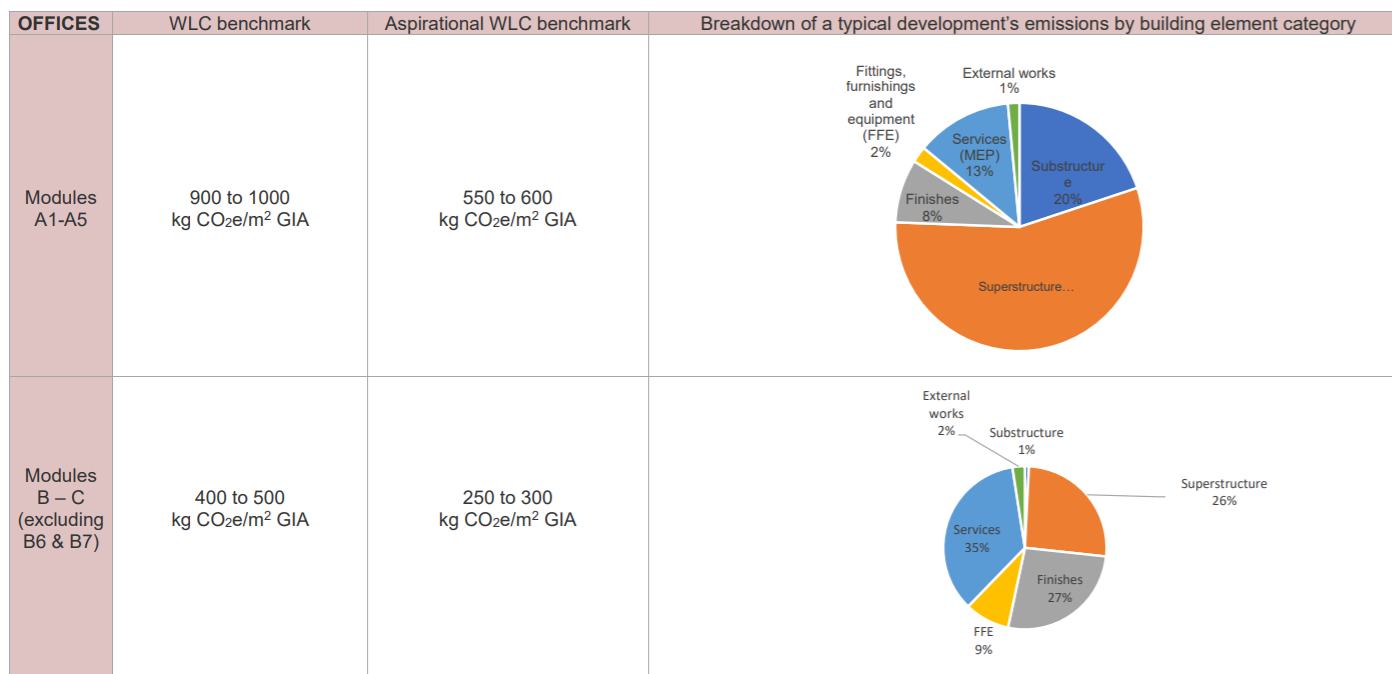
Obtaining planning consent in London now requires addressing Whole Life-Cycle Carbon (WLCC) emissions. Here we explain our approach to this now and how it may evolve in the future.
At present, WLCC emission assessments are undertaken for BREEAM purposes and for general understanding of a building’s embodied carbon content
However, the Draft London Plan, once adopted, will require improvements to be made to the design of all referable developments to reduce WLCC emissions to ensure they are in line with or below benchmarks provided by the GLA.
For example, a typical fully fitted office has a benchmark of 900-1000kgCO2e/m2 for sourcing and construction stages (A1 – A5) a majority of which comes from the superstructure as shown below (taken from the GLA guidance), and a target of 400-500kgCO2e/m2 for in-use and end of life stages (B – C).
Under the new London Plan approach, the first objective will be to reduce carbon emissions from the product sourcing and construction stages. The use of recycled or repurposed materials, as opposed to newly sourced raw materials, typically reduces the carbon emissions from constructing a new building and reduces waste. Another measure to reduce carbon emissions would be to avoid fully glazed façades, this will reduce cooling demand and limits the need for high-carbon materials (glass units, metal frame, shading devices etc).
Further objectives of the new policy look to reduce ‘in-use’ emissions beyond the regulated energy normally assessed under Part L (this could be maintenance or repair considerations, such as the use of modular fit-out elements), as well as ‘end of life’ stages including designing for future disassembly, adaptability or recycling/ reuse of key materials or building elements.
Posted on May 14th, 2020
Author: Zeta Stebbings
Related services: Whole Life Cycle Carbon Assessments,
